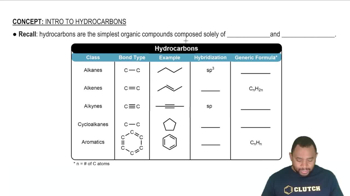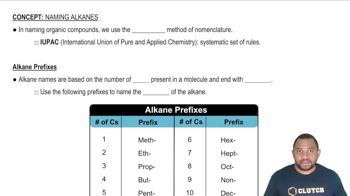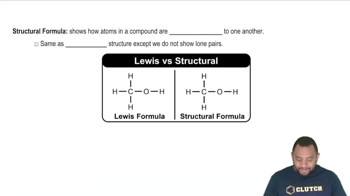Here are the essential concepts you must grasp in order to answer the question correctly.
Hydrocarbons
Hydrocarbons are organic compounds consisting entirely of hydrogen and carbon atoms. They can be classified into aliphatic (straight or branched chains) and aromatic (ring structures) hydrocarbons. Understanding the structure of hydrocarbons is essential for deriving their names and formulas, as the arrangement of carbon atoms determines the compound's properties and classification.
Recommended video:
IUPAC Nomenclature
The International Union of Pure and Applied Chemistry (IUPAC) nomenclature provides a systematic method for naming chemical compounds. For hydrocarbons, the naming convention involves identifying the longest carbon chain and using prefixes (like 'prop-' for three carbons and 'oct-' for eight) along with suffixes that indicate the type of bonds (like '-ane' for single bonds). This standardized approach ensures clarity and consistency in chemical communication.
Recommended video:
Structural Formulas
Structural formulas represent the arrangement of atoms within a molecule, showing how the atoms are connected. For hydrocarbons, structural formulas can be written in expanded form (showing all bonds) or condensed form (simplifying the representation). Understanding structural formulas is crucial for translating between names and formulas, as they provide insight into the molecular structure and help identify isomers.
Recommended video:

 Verified step by step guidance
Verified step by step guidance

